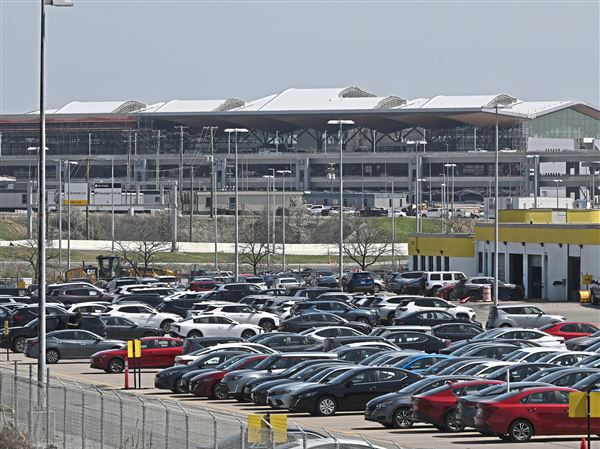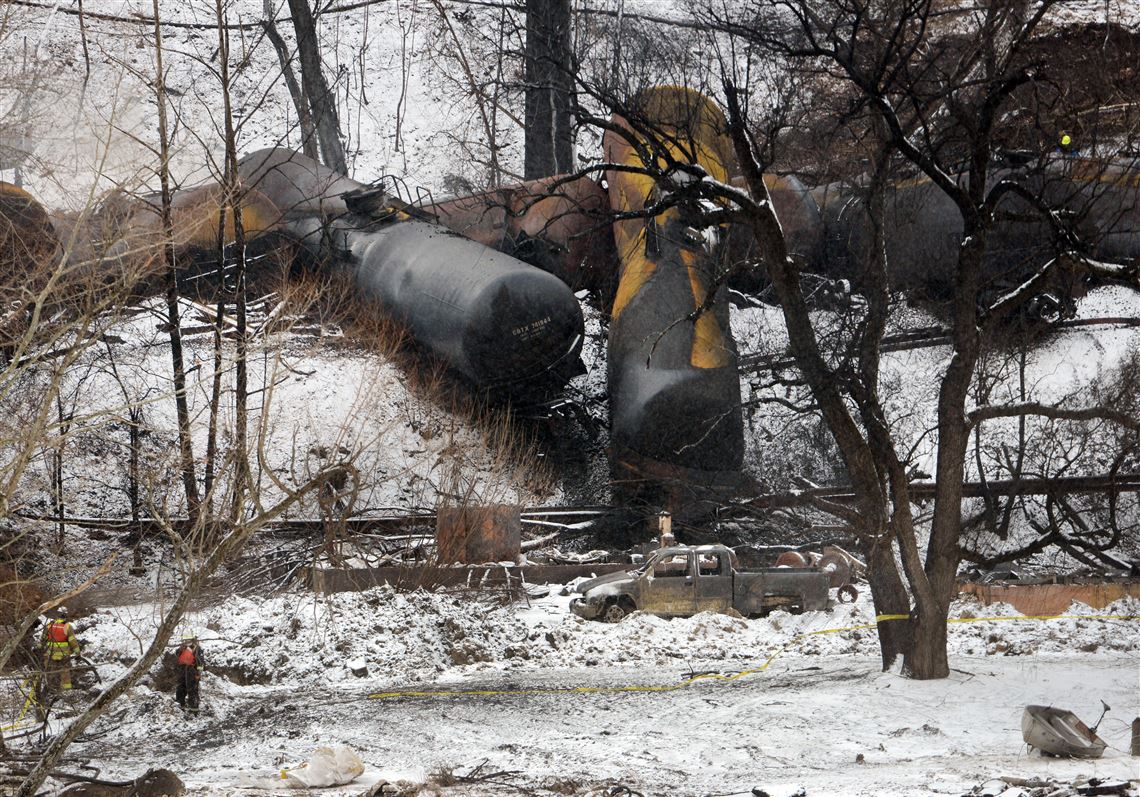When a CSX train carrying 3 million gallons of crude oil derailed and some of its tankers exploded in West Virginia on Monday, a safety improvement plan favored by the railroad industry may have gone up in flames with them.
By some measures, Monday’s crash southeast of Charleston was not as devastating as other recent incidents involving tankers filled with flammable crude oil. The crash and its aftermath were frightening and disruptive for hundreds of families who had to temporarily leave their homes and who lost water and electrical service, but there was no loss of life, unlike the 2013 crash in Quebec that killed 47 people. Injuries in West Virginia were limited to one man who had to be treated for smoke inhalation after his home was swallowed by fire, and the extent of property and environmental damage still is being assessed.
The most alarming aspect of this event, however, was the tankers themselves. The ruptured cars were the newer models, built to meet specifications adopted by the railroad industry in 2011 to answer claims that older vessels were unsafe and more susceptible to puncturing and exploding. In July, the U.S. Transportation Department ordered the industry to switch so that, by 2017, only the stronger tanks would be used by oil shippers. Last month, though, it put off issuing final rules until May.
Now there are worries that the so-called improvements are a pipe dream. The same type of tankers that blew up on Monday also were involved in a crash in Lynchburg, Va., last May and on Saturday in Timmins, Ontario. As the saying goes, once is an accident, twice is a coincidence and three times is a habit.
The nation cannot allow these costly, hazardous crashes to become habitual, and this is not a subject for idle speculation in Pittsburgh. As many as 75 trains, each loaded with at least 1 million gallons of oil, pass through Allegheny County each week, including on tracks that skirt Downtown and Station Square on the South Side. Train safety is an issue for the county’s neighbors, too, with shipments moving through Armstrong, Beaver, Bedford, Erie, Fayette, Somerset and Westmoreland counties.
At a time when domestic oil production is booming, it’s the shared task of the industry and federal overseers to ensure the nation of two things — that railways are adequate for the large-scale transport of crude and that the tankers that carry it are safer than those in use today.
First Published: February 20, 2015, 5:00 a.m.

















